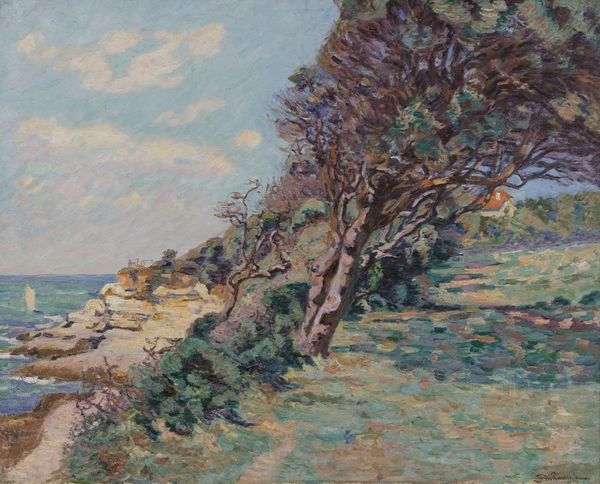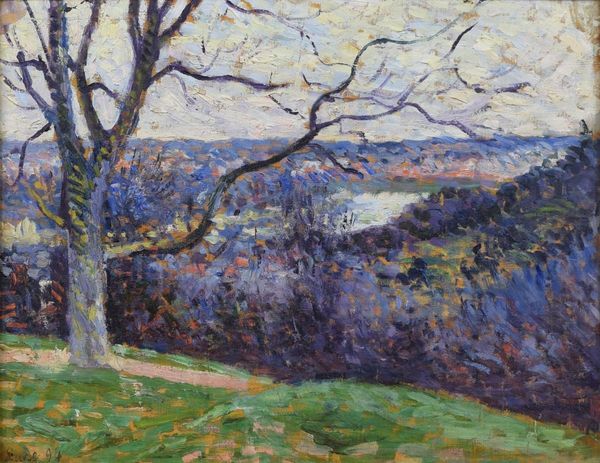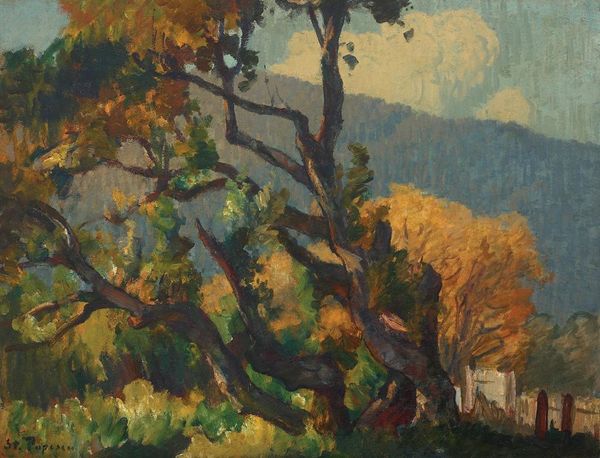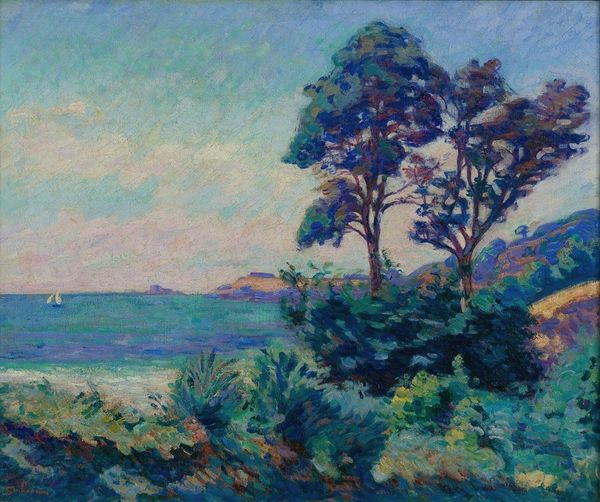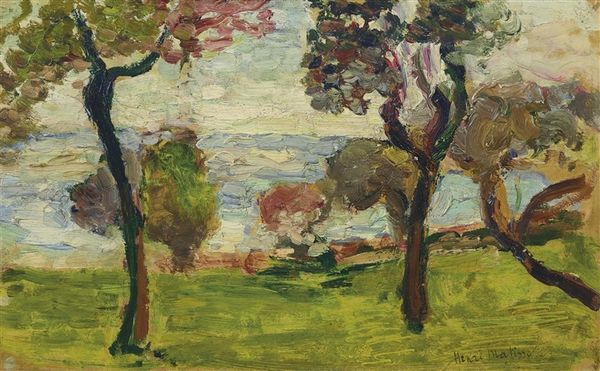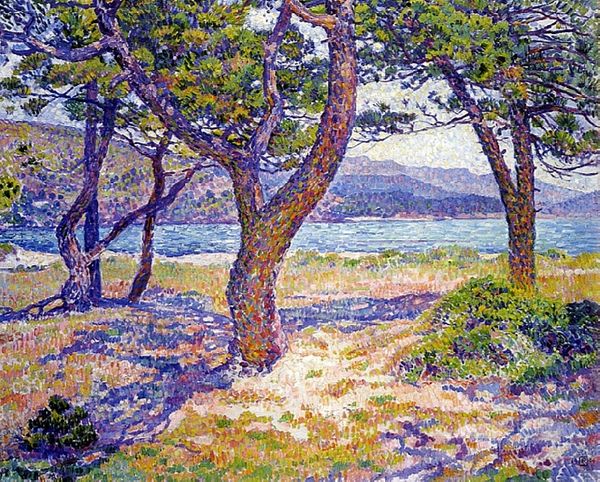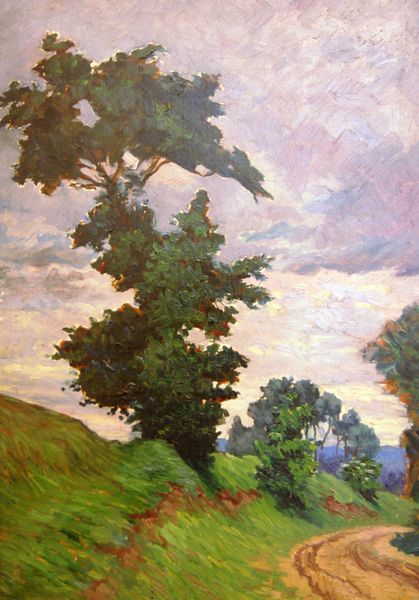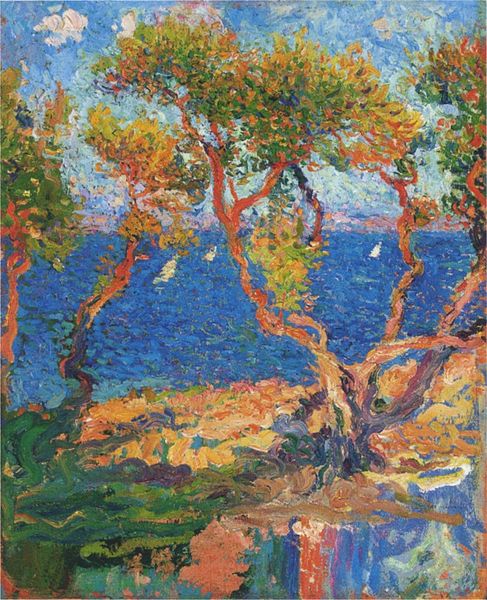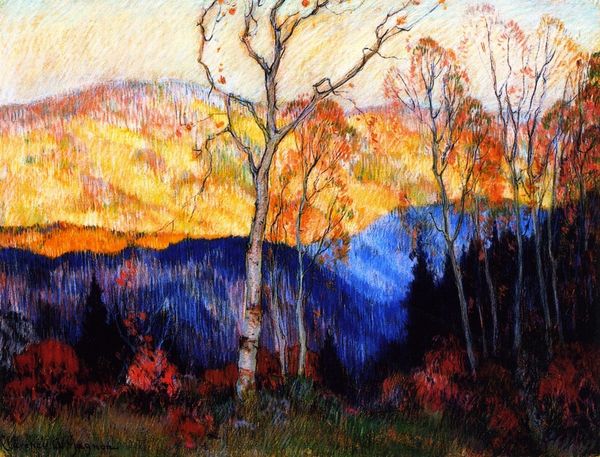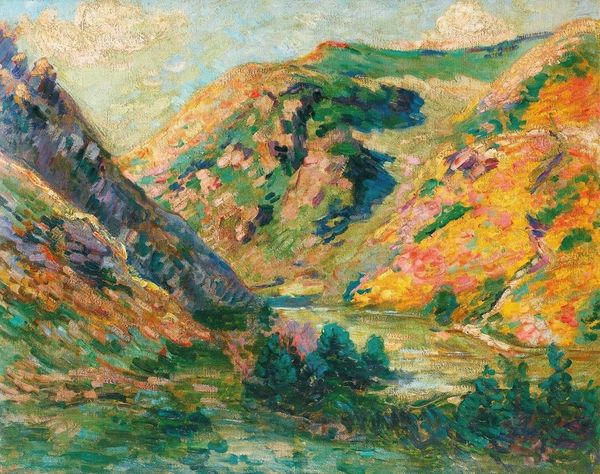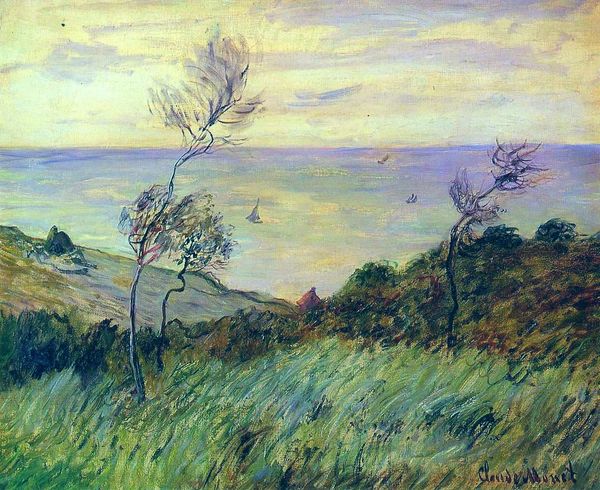
Copyright: Public Domain: Artvee
Curator: Welcome. Here we have Armand Guillaumin’s "Les Bréjots," an oil painting dating to 1917. Editor: My initial feeling is of wistful stillness, perhaps tinged with a bit of melancholy. The color palette—soft blues, pinks, and greens—creates a very tranquil atmosphere, almost muted, like a memory. Curator: Precisely. Guillaumin, working within the Impressionist tradition, captured the light and atmosphere of the French landscape beautifully here. The composition, divided into foreground, middle ground, and background, provides a balanced visual experience. Editor: Indeed, and the visible brushstrokes give an immediacy to the work, connecting us to the artist's hand and the very act of creation. But beyond the formal qualities, this image speaks to a particular time. 1917, during the height of the First World War. How did that environment affect Guillaumin’s choice to represent the Bréjots landscape? Curator: A compelling point. Perhaps this landscape represents an escape, a deliberate choice to depict the enduring beauty of nature amidst human conflict. The lack of people becomes a powerful statement. Editor: It also calls to mind the economic and social conditions for the artists in this era, during a war when life and capital were at an extreme scarcity. Was landscape painting seen as removed or divorced from war and other scenes of modern life? Was it necessarily an aesthetic privilege? Curator: One could argue the focus on landscape, light, and color reflects a shift in artistic concerns, perhaps even a withdrawal from overtly political themes in favor of exploring pure aesthetics. The Impressionists were, after all, revolutionaries in their own right. They were breaking from academic tradition and embracing new ways of seeing the world. Editor: That's true, their revolution lay in the formal innovations. But it also opens the door to the complex relations between art and historical events, between visual pleasure and political questions that defined the experience of modernity for many artists during Guillaumin’s time. Curator: Regardless, what’s clear is the artist’s masterful control over color and light that transforms a simple landscape into a scene with considerable impact. Editor: And considering the historical moment, Guillaumin’s "Les Bréjots" remains a testament to art's ability to offer solace. It makes us ponder the complex relationship between individual vision, the artist's work, and their location in time and place.
Comments
No comments
Be the first to comment and join the conversation on the ultimate creative platform.
